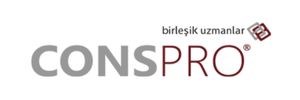


As businesses grow in the process, they need a more efficient and reliable payroll system in terms of financial developments. These systems facilitate the management of complex processes such as changing tax legislation and different labor laws. Although most ERP (Enterprise Resource Planning) solutions include standard payroll features, a robust and flexible solution is required to meet all the needs of the human resources department. Standard payroll systems are usually sufficient until the business starts operating on a global scale and serving international customers. But with growth, global payroll management becomes more challenging. While powerful ERP solutions like Microsoft Dynamics 365 offer comprehensive payroll capabilities for a variety of industries, diversifying and growing businesses can't base all their operations on a single solution. They need to integrate different solutions with advanced capabilities to meet their specific needs. Therefore, solutions in the Microsoft Dynamics 365 ecosystem can be integrated with other add-ons or third-party solutions to enable data flow while improving system performance. Three integration methods are typically used to connect two systems. Before moving on to these methods, let's examine the importance of payroll systems for modern businesses and what they are.
Regardless of which payroll service provider your business uses, you can manage your employee data from a single point in your Dynamics 365 environment. You can securely and efficiently process confidential payroll information in compliance with country-specific and company-specific legal regulations. Thanks to the automatic export and import mechanism, seamless data flow is ensured between your payroll data and your payroll provider. This eliminates repetitive data entries and significantly simplifies your payroll processes.
Your payroll administrator can quickly configure the interface to instantly record changes in employee information. The Payroll Interface converts existing data into a format that your payroll system can understand through APIs, XML, or CSV files.
We provide support to help you establish accurate data storage processes that comply with country, legal entity, and fiscal requirements. This is especially critical for sensitive payroll information such as employee identity, contact information, personal data, benefits, work statistics, worker categories, wages, earnings and tax codes, and payment cycles.
The payroll system is an indispensable part of the modern business world. This system, which can be described as the heart of the HR department, directly affects the financial health of companies and employee satisfaction. A comprehensive payroll application not only manages salary payments, but also organizes the entire financial flow of the company.
Here are the main functions of the payroll system:
1. Wage Calculations: Accurately calculates the wage that each employee deserves, regardless of the type of work (hourly, monthly, commissioned).
2. Deduction Management: Automatically calculates and tracks legal deductions such as tax, insurance and social security.
3. Time Tracking: It records the working hours of employees regardless of where and how they work (office, remote, hybrid).
4. Payment Processing: Performs salary payments through various methods (bank transfer, check, etc.) and matches all transactions with bank records.
5. Legal Compliance: Quickly adapts to constantly changing tax laws, labor law and other legal regulations.
6. Data Management: Records and stores all financial transactions in accordance with global standards.
An effective payroll system increases companies' financial transparency, reinforces employee trust and minimizes legal risks. Therefore, choosing the right payroll solution is a critical decision for the future of businesses.
Payroll systems are one of the cornerstones of every organization. Managing employee salaries, taxes and financial transactions plays a critical role, while Microsoft Dynamics 365 offers a powerful ERP solution for business operations. Integrating these two systems improves data accuracy, minimizes manual data entry and ensures timely, compliant payroll processing.
Integrating your payroll system with Microsoft Dynamics 365 brings many important benefits to your business. The integration synchronizes payroll information with Dynamics 365, eliminating repetitive data entry, saving time and reducing the risk of errors. Furthermore, the integration enhances reporting capabilities, allowing you to generate detailed reports on payroll costs and financial metrics. In this way, you can make more informed and strategic decisions about your company's financial situation.
Aligning Dynamics 365 Human Resources/Finance and Operations with the capabilities of your payroll system may vary depending on your preferred payroll provider. In general, the process can be summarized as follows:
This approach ensures a seamless flow of data between Dynamics 365 and your preferred payroll system, allowing you to optimize your business processes and generate more accurate financial reports.